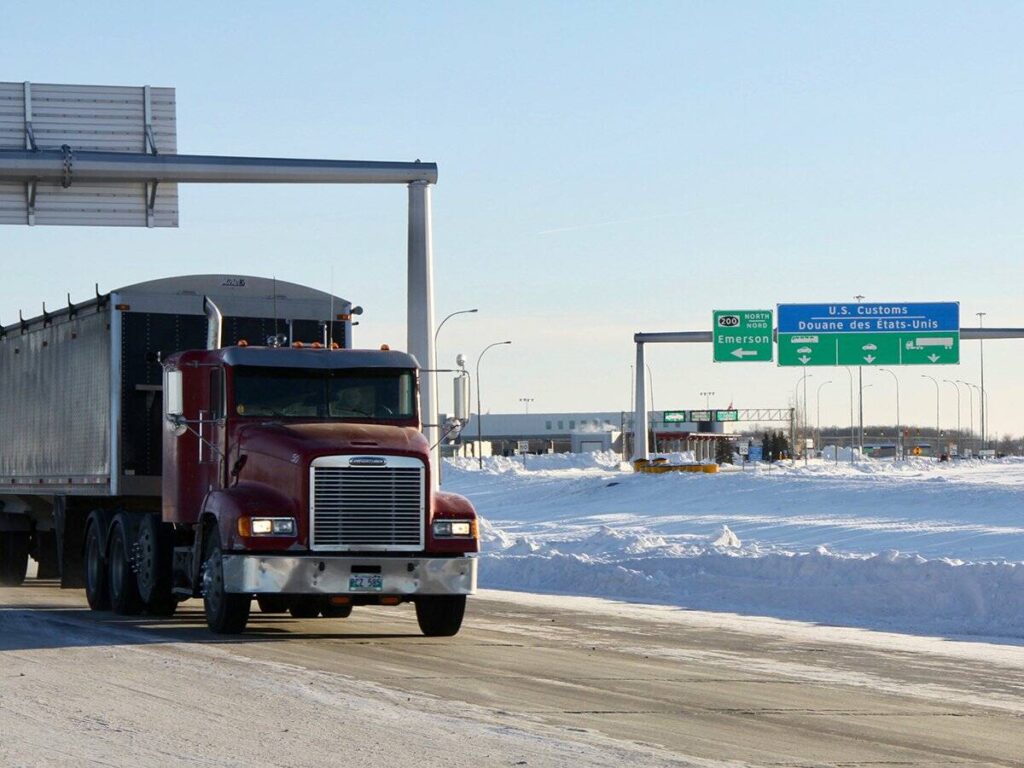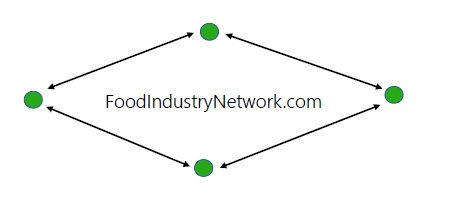Alberta farm leader hopes for stronger trade once dust settles

Trade wars are erupting on multiple fronts for Canada, but there is hope that the future will bring steadier times for the agriculture industry when it comes to separating fact from fiction on the international stage.
U.S. tariffs on Canadian tariffs have now been joined by those from China.
Expected to take effect March 20, Beijing announced tariffs on select Canadian farm imports in response to Canadian duties levied last fall against Chinese electric vehicles, as well as steel and aluminum, with the biggest being 100 per cent tariffs on canola and peas and 25 per cent on pork and aquatic products.
Read Also


Lutnick suggests U.S. to eventually make new bilateral trade deals
As NATO secretary general Mark Rutte sat quietly beside U.S. president Donald Trump in an Oval Office press conference March 13, the president declared that Canada, a key NATO nation, should willingly submit to American dominance.
Last year, total exports of Canadian canola seed and products were valued at nearly $5 billion, and included two million tonnes of canola meal. China is also one of Canada’s largest markets for yellow peas, importing about a half million tonnes of the legume at slightly more than $300 million in 2024, according to Pulse Canada.
The tariff announcement comes at a time when farmers are getting ready to seed this year’s crop.
Canola crushers uncertain
“It’s had a large effect on different parts of our industry, and it keeps unfolding. It’s sort of bad news after bad news in some areas. With the Chinese tariffs just coming on too and with the U.S. saying canola oil does not qualify for their their bio fuel programs, that has a big effect on canola and canola production,” said Lynn Jacobson, president of the Alberta Federation of Agriculture.
“From things that have been said and people we’ve talked to, companies that basically have been going to build some oil-crushing facilities or are in the process of building oil crushing facilities have put a hold on those things right now. That’s a big effect, because now we have to start trying to find other markets for that oil.”
Closer to home, many nations have raised the ire of U.S. president Donald Trump, the most recent being threats against the European Union of 200 per cent tariffs on alcohol if the EU does not relent on its retaliatory 50 per cent whiskey tariff.
Farmers are left trying to sift through exactly what the Americans are trying to accomplish as they add new tariffs as quickly as they pull back others.
Negotiations continue as a Canadian delegation engages in talks with its U.S. counterparts again today in Washington.
Taking out dairy the goal?
Many agriculture organizations are scratching their heads as they attempt to understand the logic behind the tariffs if closing trade deficits is a goal.
“Dairy is a classic example. They’re talking 240 to 300 per cent Trump is spouting out there (U.S. dairy tariff), but it’s not factual information,” said Jacobson. “We don’t have tariffs on that high. A lot of the stuff was moving tariff free between the countries, and he doesn’t recognize that at all.”
“Basically, his goal is just to take out the dairy industry in Canada,” he said.
One U.S. state produces more dairy than all of Canada, said Jacobson. So destroying Canadian dairy wouldn’t help many American businesses.
Tuesday saw U.S. President Donald Trump’s 25 per cent tariffs on steel and aluminum imports come into effect, and the next day Canada struck back with nearly $30 billion in counter tariffs, on the eve of Thursday’s Washington negotiations. Meanwhile, the Canadian ag industry is wondering when the next shoe will drop.
“It’s really hindered the process (with short and long-term planning),” said Jacobson. “Some guys I know are basically saying we’re just going to sit tight and we’re just gonna see what’s going to actually come out of this.”
“This might be a lot of rhetoric for nothing, but then it also can be the other way around, too. You read the reports out of the States, this quick changing thing I think is part of his plan to keep everybody unsettled, and so nobody knows exactly what’s going on.”
Jacobson allowed that Trump may be simply aiming to cause disruption.
“Everybody’s been saying he backs off as soon as the stock market starts to crash,” he said. “Personally, I don’t think the guy has a grasp of reality to a certain degree.”
Crisis in the cattle industry
Timing is everything in the cattle industry, which caused panic when the tariffs were first mentioned earlier this year. While domestic contracts are likely to be honoured, feedlots shipping to the U.S. have already run into trouble.
Before tariffs came in, feedlots rushed to move animals across the border.
“That disrupts animals on that end of it,” Jacobson said. “If you hang on to them, and all of a sudden a tariff comes on, you’re looking at a $3,000 animal, you’re going to lose another 25 per cent loss off $3,000.”
“There’s the animal welfare aspect, too, because you start holding animals in the feedlot. They’re on high gain, high energy diets. You got to extend them out and then you start getting overweight animals. They don’t meet the grade, so they got to get degraded.”
The will to break down barriers
Jacobson sees the crisis as an opportunity to focus more on improving inter-provincial trade and looking to pivot to other international markets.
“It (tariff threats) has galvanized Canadian producers and governments to start looking at that interprovincial trade. That’s something that we’ve talked about for 25 years,” said Jacobson. “We’ve tried to get that done, and it has always been special interest groups that always seem to have the ear of the governments that say, ‘no you can’t do that.’ But I think that’s disappearing, and hopefully that’ll continue on.”
He questioned if this resolve would continue if the trade war was suddenly straightened out. While farmers are pressing for greater interprovincial trade, the industry also says it’s easier to ship to the U.S.
“So that’s the biggest fear, do those interprovincial trade agreements go on the back burner?” said Jacobson.
“What is happening now with trade, maybe, will be more the norm, maybe not as drastic, but more of the norm as we go forward. It really shows we need to diversify our markets. We need different ways of doing business.”
Jacobson noted no one has put together a comprehensive list of interprovincial trade rules that interfere with each other. There are the broad-stroke barriers in transportation and food processing that people are familiar with but there are others producers do not know about that could be removed.
“We don’t know what we’re dealing with,” said Jacobson.
Jacobson said a coordinated approach on interprovincial trade can also be expanded to include the various agricultural sectors finding common ground as they manage U.S threats.
Trade may reroute around U.S.
It’s also important that American citizens make it clear to their governors how devastating the tariffs are on both sides of the border.
“We’re really being hurt. It’s affecting jobs for some people, it’s threatened layoffs in other parts of the industry. We’ve been urging the government to take a look at the safety nets,” Jacobson said. “Maybe there’s going to have to be some changes in some of the regulations. We can really, really be hurt in many, many ways here. ”
If Trump continues to have an us-against-the-world view in international trade, it may give other nations the push to look to other markets in a unified movement. However, pivoting takes time. The grain industry ships about 30 per cent of its crop into the U.S., but there is demand for the product elsewhere.
“There is a danger that in the long run, the U.S. is isolating itself, and people are just going to go around it and ignore them,” said Jacobson.
“What really needs to happen is their Senate and their Congress needs to stand up and start saying, ‘no, you can’t do some of this stuff,’” he added. “You need to have some of those Republicans in the houses start saying something to get some bills passed instead of just letting Trump walk away and do what he wants.”
The uncertainty continues as Canada waits to see what the U.S. does next.
“Nobody really, really knows exactly what is happening,” Jacobson. “They do know prices are going to fall on our raw commodities.”
“I’m like everybody else — what’s coming next?”
Source: Farmtario.com

